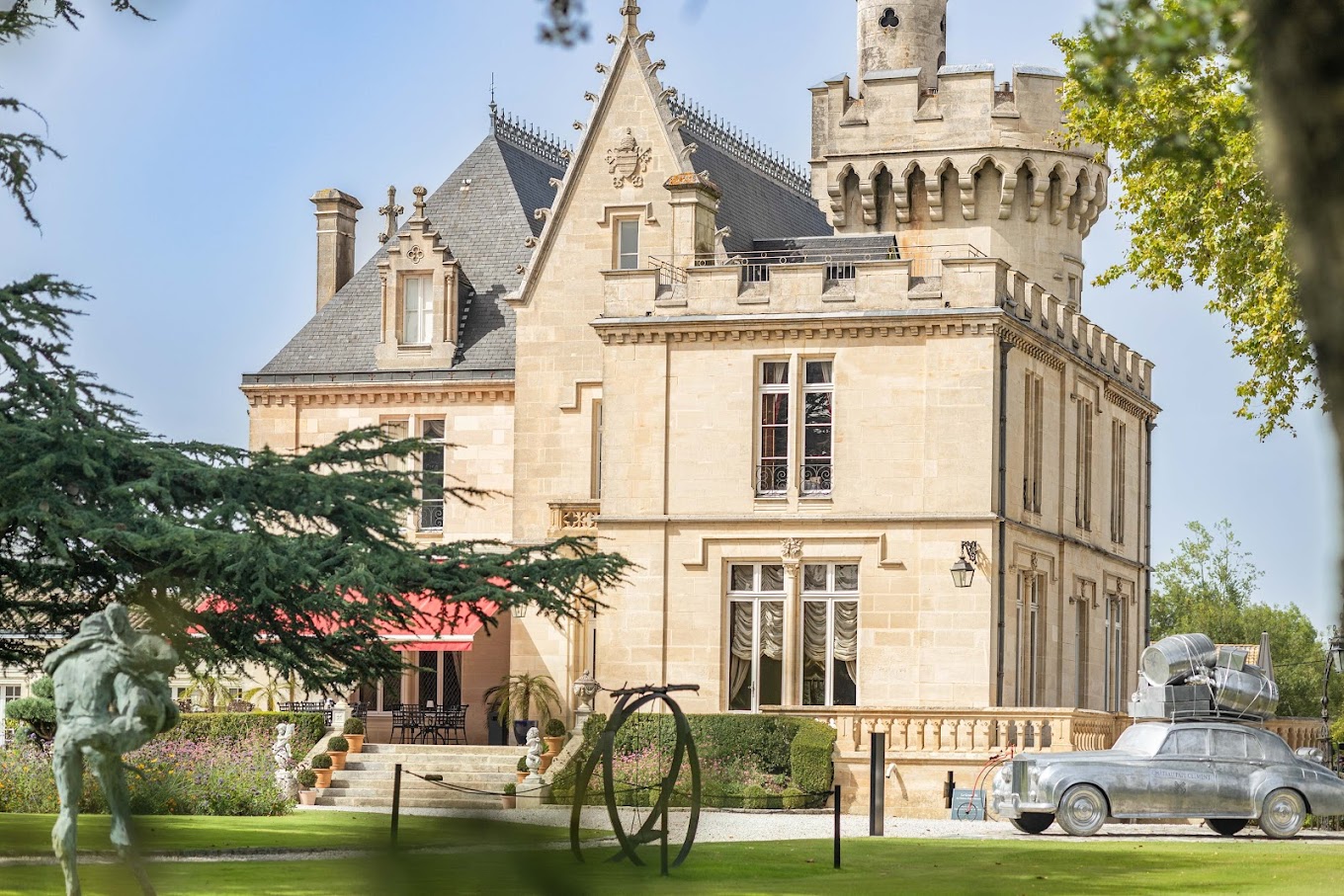
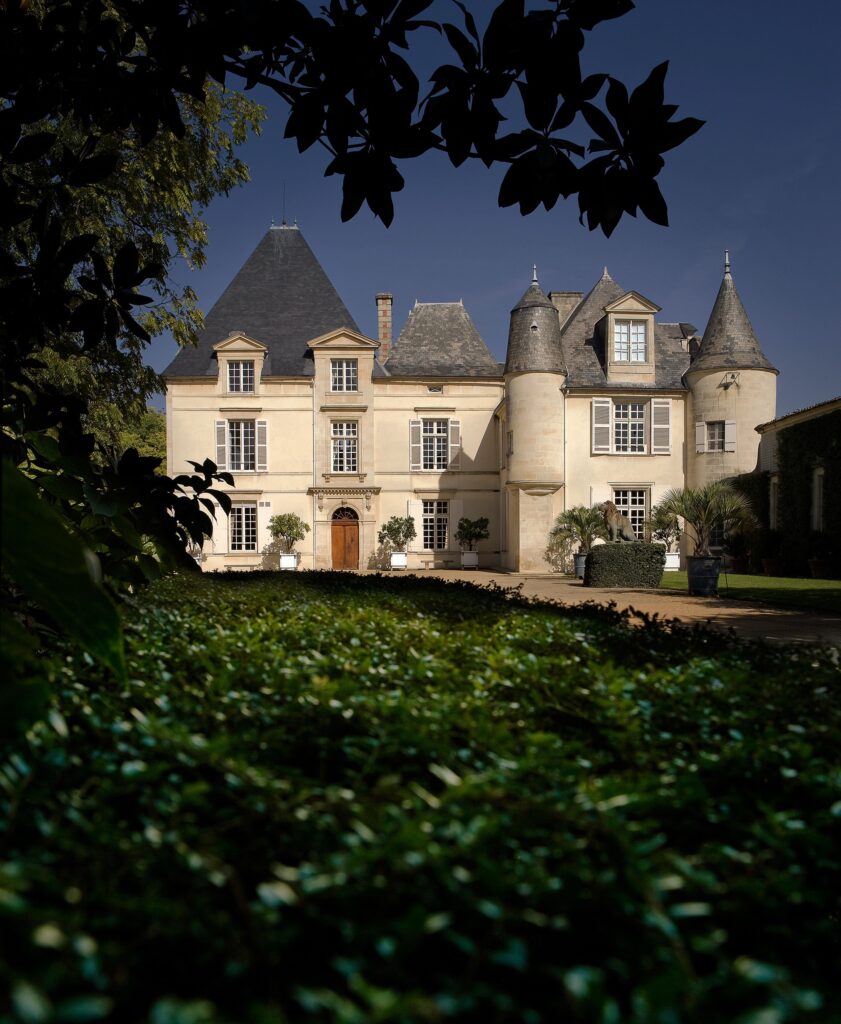
In the world of fine wines, few classifications hold the prestige and historical significance of the Grand Cru Classé de Graves. This elite designation represents the pinnacle of winemaking excellence in Bordeaux's Graves region, encompassing 16 exceptional châteaux renowned for their outstanding terroir and winemaking traditions. Whether you're a seasoned wine connoisseur or an enthusiastic beginner, understanding this classification unlocks a deeper appreciation for some of Bordeaux's most distinguished wines.
The Grand Cru Classé de Graves represents an exclusive classification system that recognizes the most prestigious wine estates within the Graves region of Bordeaux. Unlike other Bordeaux classifications that focus solely on red or white wines, the Grand Cru Classé de Graves stands unique in acknowledging excellence in both varieties from the same estates.
This classification serves as a mark of exceptional quality, rigorous production standards, and consistent excellence. For wine enthusiasts, the Grand Cru Classé designation signals wines of remarkable character, complexity, and aging potential that embody the distinctive gravelly terroir from which they derive their name.
The classification's origins trace back to 1953 when it was first established, then subsequently revised in 1959 to its current form. This makes it considerably younger than the famous 1855 Bordeaux Classification that governs Médoc and Sauternes. While the 1855 classification resulted from Napoleon III's request for a ranking system for the Paris Exhibition, the Grand Cru Classé de Graves emerged from regional efforts to distinguish the exceptional estates within this historically significant winemaking area.
What sets this classification apart is its foundation in the post-World War II era, allowing it to incorporate more modern winemaking philosophies while still honoring traditional methods. The classification has remained unchanged since 1959, creating a stable legacy that continues to influence Bordeaux's wine industry today.
Achieving Grand Cru Classé de Graves status requires meeting exacting standards across multiple dimensions:
These stringent requirements ensure that only truly exceptional estates earn and maintain this prestigious classification, creating an assurance of quality for wine consumers worldwide.
The Grand Cru Classé de Graves classification encompasses exactly 16 châteaux, making it one of the most exclusive wine designations in the world. This limited membership underscores the exceptional quality required for inclusion and highlights the rarity of these distinguished wines.
What makes this classification particularly unique in Bordeaux is its recognition of both red and white wines from the same estates. While some châteaux excel primarily in one category, many produce outstanding examples of both, showcasing the versatility and excellence of the Graves terroir.
The Grand Cru Classé de Graves stands as the only Bordeaux classification that formally recognizes excellence in both red and white wine production. This dual categorization reflects the region's exceptional ability to produce world-class wines across different styles:
Red Wines: All 16 classified châteaux produce red wines, typically blends dominated by Cabernet Sauvignon and Merlot, with smaller proportions of Cabernet Franc and Petit Verdot. These reds are known for their structure, elegance, and remarkable aging potential.
White Wines: Several of the classified châteaux also produce exceptional white wines, primarily from Sauvignon Blanc and Sémillon grapes. These whites are celebrated for their complexity, mineral character, and ability to develop beautifully with age – a characteristic that sets them apart from many white wines worldwide.
This dual classification system highlights the Graves region's unique diversity and versatility in winemaking, offering enthusiasts a comprehensive experience of Bordeaux's finest expressions. However there are no individual rankings (first, second, third classified growth etc.) like for the 1855 classification of the Graves and Sauternes.
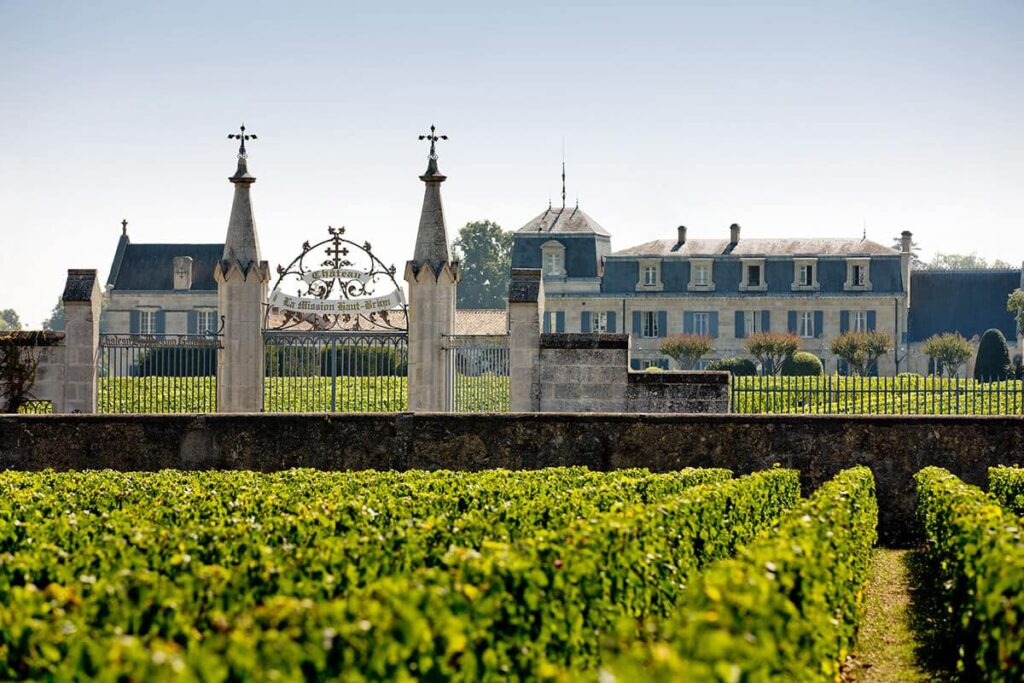
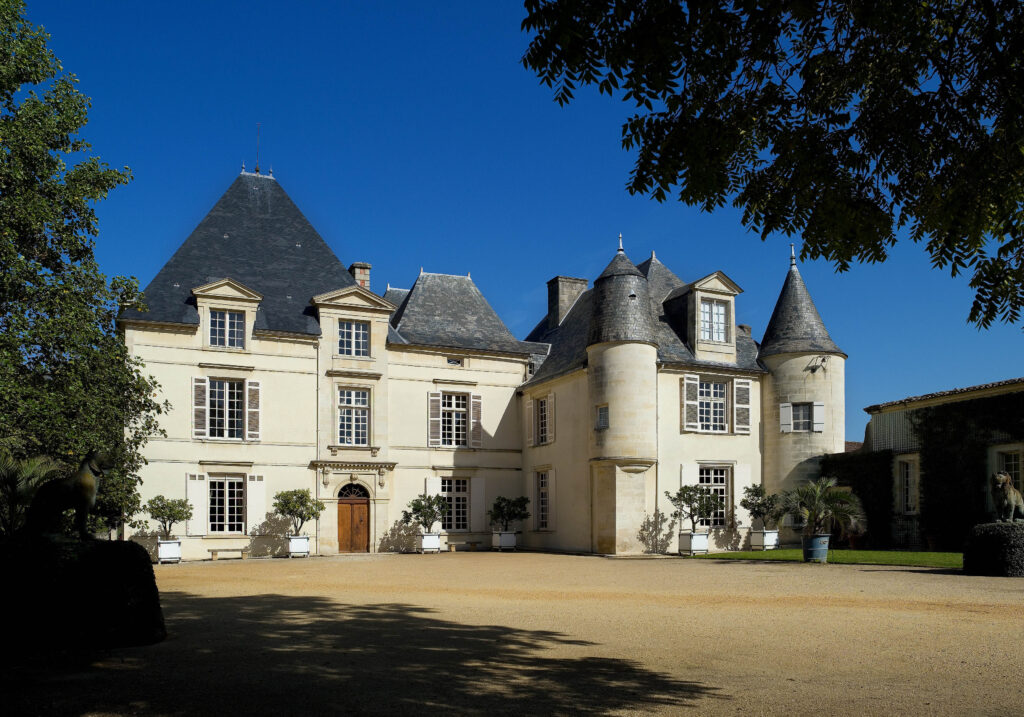
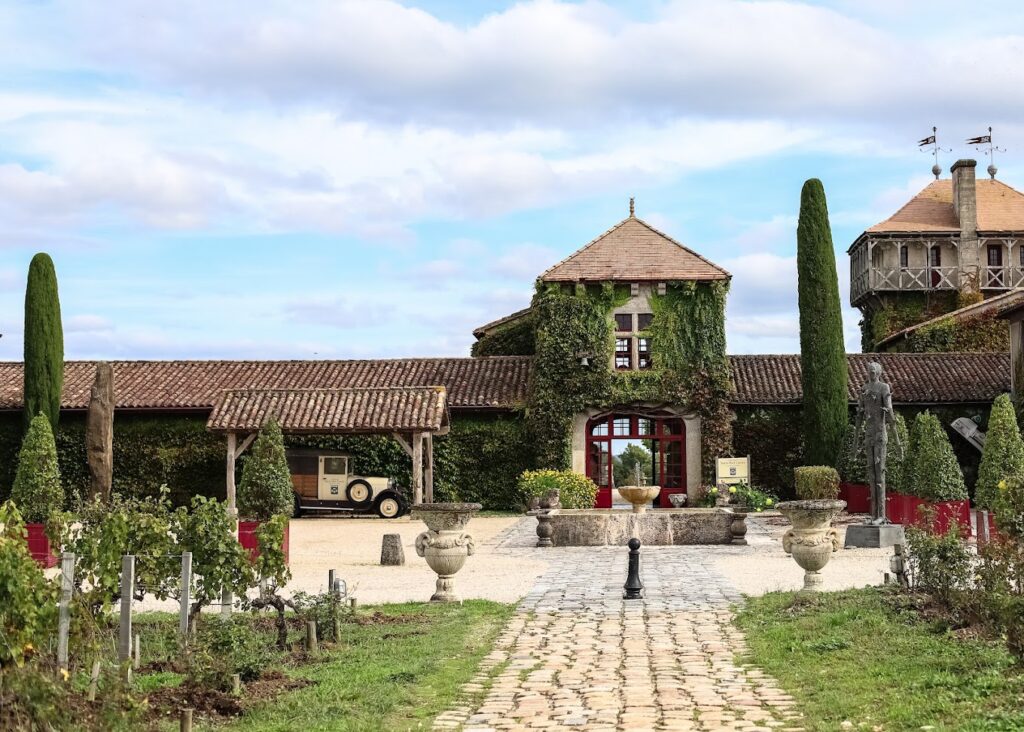
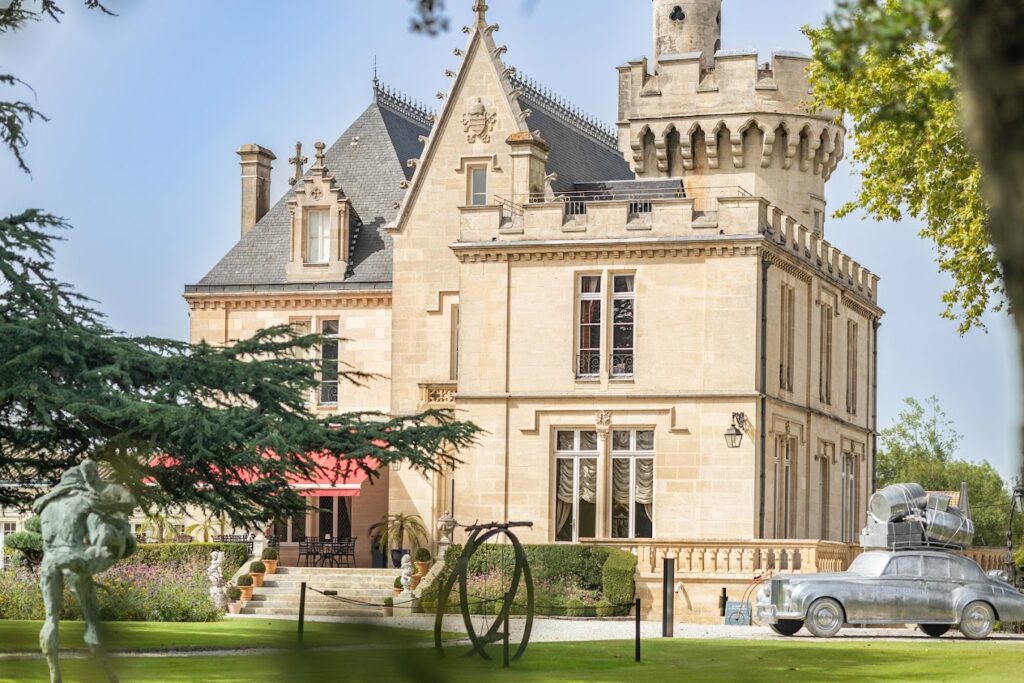
The 16 esteemed châteaux that comprise the Grand Cru Classé de Graves represent the pinnacle of winemaking excellence in this historic region. Each estate brings its own distinctive character and approach to winemaking while upholding the rigorous standards of the classification. Here are just a few we visit regularly.
Château Haut-Brion stands as the undisputed crown jewel of the Graves classification. As the only Graves estate also included in the prestigious 1855 Classification (as a First Growth), it holds a dual distinction that speaks to its extraordinary quality and historical importance.
Dating back to the 16th century, Haut-Brion pioneered many modern winemaking techniques and has maintained its reputation for producing wines of remarkable finesse, complexity, and aging potential. Its red wines offer an elegant profile with notes of dark fruits, tobacco, and an unmistakable gravelly minerality, while its white wines (Haut-Brion Blanc) are among the most sought-after and expensive white wines in the world.
The château's consistent excellence through centuries of production has cemented its status as not just a leader in Graves, but as one of the world's most iconic wine estates.
Located directly across from Château Haut-Brion and now under the same ownership, Château La Mission Haut-Brion has carved out its own distinguished reputation. Often considered the equal of its illustrious neighbor, La Mission produces red wines characterized by power, depth, and remarkable complexity.
The château's red wines typically show greater boldness and concentration than Haut-Brion, with prominent notes of black fruits, smoke, and earth. Its white wine, La Mission Haut-Brion Blanc, rivals its red counterpart in quality and prestige, offering rich textures with honeyed notes balanced by vibrant acidity.
The estate's winemaking philosophy embraces both tradition and innovation, resulting in wines that consistently rank among the finest in Bordeaux and showcase the exceptional potential of the Graves terroir.
Decanter Tours' Tip: Chateau La Mission Haut-Brion is more accessible than Chateau Haut Brion. Both are great to see but we love the gardens at La Mission.
Named after its most famous owner, Pope Clement V, Château Pape Clément boasts one of the longest histories of any Bordeaux wine estate, dating back to the 13th century. This venerable château has distinguished itself through a careful balance of respecting tradition while embracing modern innovations.
Under the stewardship of the well-known Bordeaux wine producer, Bernard Magrez, Pape Clément has implemented cutting-edge viticultural practices, including plot-by-plot harvesting and precision viticulture. The red wines are known for their opulence, concentration, and rich dark fruit profiles, while the whites offer aromatic complexity and remarkable texture.
The chateau is located within the outer ring road of Bordeaux town which makes it one of the few urban wineries that can be found in the area.
Over the past few decades, Château Smith Haut Lafitte has undergone a remarkable transformation under the ownership of Daniel and Florence Cathiard. This revitalization has elevated the estate to new heights while maintaining deep respect for its historical significance.
The château has embraced organic and biodynamic and sustainable principles, establishing its own cooperage and implementing innovative techniques such as using optical sorting technology and gravity-flow systems. These investments in quality have yielded exceptional results. They built their ‘Stealth Cellar’ in 2013 to for grapes from younger vines destined for the second wines of the property; Le Petit Haut Lafitte and Les Hauts de Smith. It was designed to minimise its environmental impact and was built around existing trees, with the moss and shrubs growing on the roof to blend into the environment and increase insulation. The thick walls are built from local materials by local builders and the natural humidity and geothermal heat exchangers maintain cool temperatures. Solar panels help power the cellar and since 2014, CO2 from fermentation is recovered to make bicarbonate of soda
Smith Haut Lafitte's red wines display impressive depth and structure with signature notes of blackberry, truffle, and graphite, while their whites are consistently rated among Bordeaux's finest, offering vibrant citrus notes with distinctive minerality and complexity.
The estate exemplifies how thoughtful modernization can enhance traditional winemaking, resulting in wines that honor their heritage while appealing to contemporary wine enthusiasts.
Decanter Tours' Tip: their Foret des Sens is well worth a stroll on a summers day. This new ‘Land Art’ installation – The Forest of the Five senses is hidden away in almost 20 acres of woods behind Château Smith Haut Lafitte.
The exceptional quality of Grand Cru Classé de Graves wines stems from a perfect alignment of natural advantages and human expertise. These wines capture the essence of their unique terroir while demonstrating the skillful hand of generations of winemakers.
Several factors contribute to their special character:
These combined elements create wines that transcend simple beverage status to become expressions of place, time, and human artistry.
The red wines from Grand Cru Classé de Graves estates showcase a distinctive personality that sets them apart from other Bordeaux appellations. While sharing the region's commitment to excellence, these wines express unique characteristics:
The best examples demonstrate remarkable longevity, with premium vintages continuing to evolve and improve for 30+ years, making them treasured additions to serious wine collections.
The white wines of Grand Cru Classé de Graves stand among the world's most distinctive and age-worthy white wines, challenging the notion that only red wines deserve serious cellaring. These exceptional whites offer a compelling combination of immediate pleasure and long-term potential:
These whites represent some of Bordeaux's most sought-after and expensive white wines, competing with the finest white Burgundies for complexity and aging potential.
The Grand Cru Classé de Graves holds a unique position among Bordeaux's classification systems, with several distinguishing characteristics that set it apart:
Dual Wine Recognition: Unlike the 1855 Classification, which separately classifies Médoc reds and Sauternes whites, the Graves classification recognizes excellence in both red and white wines from the same estates.
Geographic Focus: The classification is exclusively limited to the historic Graves region, focusing on terroir-specific excellence rather than the broader approach of some other classifications.
Historical Context: Established in 1953 and finalized in 1959, it's considerably younger than the 1855 Classification, reflecting post-war quality assessments rather than 19th-century market values.
Static Nature: Like the 1855 Classification, the Grand Cru Classé de Graves has remained unchanged since its establishment, unlike the Saint-Émilion classification which undergoes regular revision.
Qualitative Foundation: The classification was based primarily on wine quality and estate reputation rather than market prices, which heavily influenced the 1855 Classification.
These differences highlight the unique approach and standards of the Grand Cru Classé de Graves, offering wine enthusiasts a different lens through which to appreciate Bordeaux's diverse wine traditions.
Experiencing the magic of Grand Cru Classé de Graves wines in their native setting offers an unparalleled opportunity to understand their true character and heritage. Decanter Tours provides exclusive access to these prestigious estates through carefully curated luxury experiences.
Our specialized Graves tours feature:
Our customizable itineraries can focus exclusively on Grand Cru Classé properties or incorporate them into broader Bordeaux explorations. Transportation is provided in luxury vehicles, and accommodations feature the finest hotels in the region, ensuring your experience matches the prestige of the wines themselves.
Whether you're a serious collector seeking to deepen your knowledge or a wine enthusiast looking to understand what makes these wines so special, a Decanter Tour provides the ultimate way to experience the Grand Cru Classé de Graves.
The Grand Cru Classé de Graves is an official wine classification that recognizes 16 exceptional wine estates in the Graves region of Bordeaux, France. Established in 1953 and finalized in 1959, it distinguishes châteaux that produce wines of outstanding quality, character, and consistency. This prestigious classification is unique in Bordeaux for recognizing both red and white wines from the same estates, highlighting the region's versatility and excellence across different wine styles.
Achieving Grand Cru Classé de Graves status requires meeting stringent criteria across multiple dimensions. Estates must demonstrate exceptional terroir with the characteristic gravelly soils that give the region its name. They must show historical consistency in producing outstanding wines over generations. Their production methods must adhere to the highest standards from vineyard management through winemaking. The wines themselves must display exceptional quality, complexity, and aging potential. Finally, the château must maintain an excellent reputation among wine professionals, critics, and collectors. As the classification has remained unchanged since 1959, these standards represent a historical assessment rather than an ongoing review process.
Exactly 16 châteaux hold the prestigious Grand Cru Classé de Graves designation. This limited number underscores the exclusivity and high standards required for inclusion. The classified estates include some of Bordeaux's most famous names, such as Château Haut-Brion (which is also a First Growth in the 1855 Classification), Château La Mission Haut-Brion, Château Pape Clément, and Château Smith Haut Lafitte. All 16 estates produce classified red wines, while several also produce exceptional white wines that carry the classification, making it unique among Bordeaux's classification systems for recognizing both wine styles.
Yes, many Grand Cru Classé de Graves châteaux welcome visitors, though typically by appointment only. These estates offer various visiting experiences, from standard tours and tastings to more exclusive private experiences. The level of access varies by château, with some offering intimate tastings with winemakers or owners, while others provide structured group experiences. For the most comprehensive and privileged access, specialized wine tour companies like Decanter Tours can arrange VIP visits that include private tastings of library vintages, meetings with château principals, and behind-the-scenes access not available to the general public. Visiting during harvest season (September-October) provides unique insights into the winemaking process, though availability may be more limited as estates focus on production.

Experience the finest private wine tours in Bordeaux and beyond. With over 20 years of expertise, we craft tailor-made wine journeys to iconic regions like Médoc, Saint-Émilion, Burgundy, and Champagne. Explore exclusive chateaux with expert guides and seamless planning for a truly unforgettable experience.